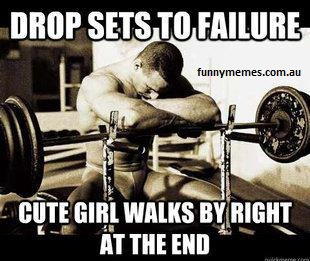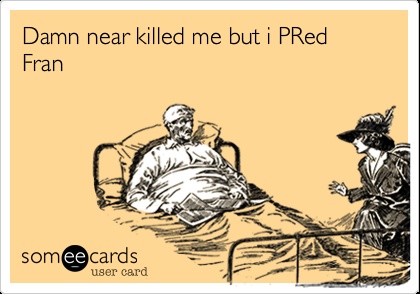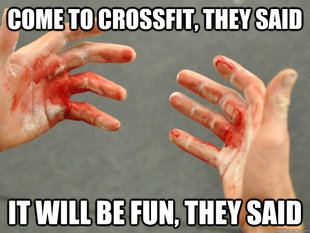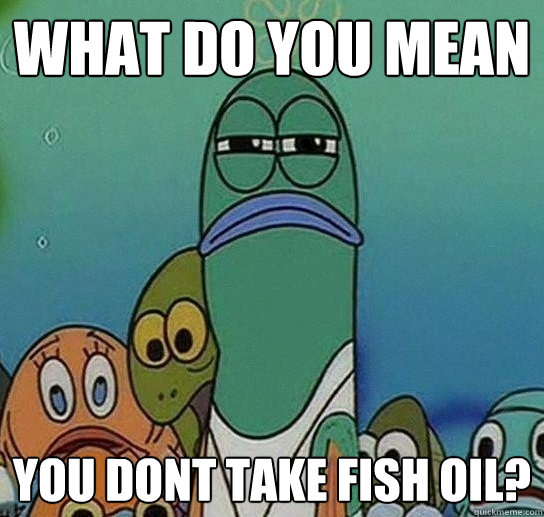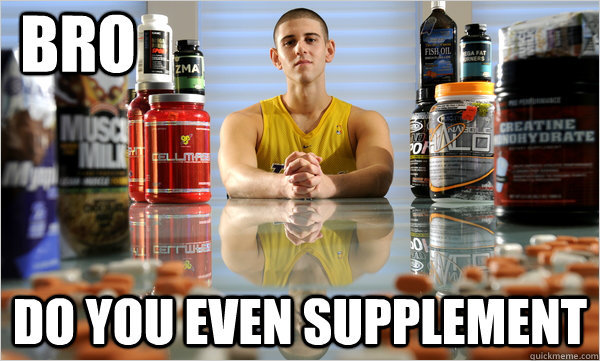Sorry for the lack of posts, graduating college and finals
really took a bunch of my time up. Now that I’m done, I’m going to really try
to post on here as much as possible. If any of you would like, I decided to
make an Instagram for this blog and for my journey through fitness, so give a
follow. I promise loads and loads of healthy food, recipes, and humorous memes.
Anyway, one topic I always wanted to write an article about,
but never had the knowledge or experience to do so was about “IIFYM.” After going
through the trial and error in the beginning, I’ve become a supporter of the
IIFYM movement, and have seen great results with it now. IIFYM = If It Fits
Your Macros. The main idea of IIFYM is it lets you indulge in some of the so
called crap we all love to eat, so long as we’re hitting our daily calorie,
fiber, macro, and micronutrient numbers. So at night you’re craving a serving
or two of ice cream? Earlier in the day get in some fruit, some veggies, hit
that fiber and protein number, and enjoy your ice cream. Now performing IIFYM
correctly involves a little patience, you need to measure out your portions, or
weigh them as I do, and track everything. I’ll cover that later in the article
but first:
What In The World Are
Macros
Macros, or macronutrients, are what make up your calories.
Protein, Fats, and Carbohydrates are macronutrients. Protein and carbs are 4
calories per gram, and one gram of fat accounts for 9 calories. While not everyone
knows what their macro amounts are, there are plenty of websites to helpdetermine your caloric intake necessary to reach your goals and will help break
down your macros. Keep in mind, these websites are estimates, not exact
numbers, so you will need to adjust given how your weight fluctuates.
For example, if you want to lose weight, and you start with
2,300 calories, and after one week of eating that caloric load you notice your
weight increases by 1.5 pounds, then you would try decreasing by 100 calories
and adjust your macros accordingly. Simple as that, just need to go through
trial and error and have patience until you start to see the results you want
to see.
So How Does IIFYM Fit
in the Grand Scheme of Things?
Well, a calorie is a calorie – For the most part. Yes there
are different hormones that some will try to manipulate (Low carbs = low
insulin), but for the most part, 2,300 calories from take-out is 2,300 calories
from “clean” foods.
Now does this mean I’m saying you can lose twenty pounds on
the only twinkie and ice cream diet? I mean, sure you can, but it won’t be
healthy. You need to focus on hitting specific goals through your daily eating,
and THEN you can squeeze in some of the junk you crave.
For example, I love Cookie Crisp cereal, but for years swore
it off since it wasn’t a clean food. Once I started to realize the science and
main idea behind IIFYM, I decided to give it a go for a week. I bought a food scale, and replaced my
normal post workout oats and protein with a protein shake and 2 servings (56g)
of cookie crisp. I did this for a week, and not only did my weight remain
unchanged as I was eating at maintenance level calories to test this diet out,
I was happier since I was able to eat foods that I haven’t had in forever.
I made sure to hit my protein and fiber goals, and made sure
to get plenty of vitamins and minerals in through various vegetables and
fruits. To be honest, ask yourself this: Does your body really know the difference
from a gram of carbohydrate from Cookie Crisp or Oats? In the end, it all gets
digested in the same place, AND AS LONG AS YOU HIT YOUR CALORIC INTAKE AND
MACRONUTRIENT TOTALS FOR THE DAY, you’ll be fine.
 |
| Will Ferrell's got it down |
 |
| This is from a recent refeed during my diet that called for copious amount of carbs. I've never met a carb I didn't like. |
 |
| Here's a normal day of eating from last week. Right now i'm experimenting with carbs super high, and fats super low. So far it's been a success. |
I capitalize that top sentence big time, because I’ve seen
others try IIFYM and use it as an excuse to eat boxes of poptarts, bowls of ice
cream, and dump loads of fruity pebbles everyday, and then they get upset when
they’re fat. You need to track your portions and caloric intake for this diet to
really work.
How Do I go About
Tracking my Intake?
There’s many ways. You can write it down with pen and paper
or you can use one of the hundreds of apps dedicated to calorie counting. I use
MyFitnessPal because it’s simple to use, you can store your own foods and
recipes, and there’s a huge database to help find other foods.
What I like to do is the night before, or in the morning,
I’ll plan what I’m going to eat for the day. I make sure to hit my calories, my
carbs, my protein, fiber, and fats, and then I simply just plug in what I want
to eat. It takes time to get used to doing this, but in no time you’ll become a
wizard at making adjustments and filling it out on the fly. Making your own food in your house and
controlling your portions to find your proper caloric intake is optimal in the
beginning. Once you have an idea of what caloric intake you need to say,
maintain your weight, then you can start adventuring outside your own kitchen
and really use IIFYM to enjoy these “dirty” foods.
One of the best parts of MyFitnessPal is the database that also
includes foods from many popular restaurants. Going to Chipotle with friends
but didn’t plan that into your macros earlier in the day? Simply erase dinner or
whatever foods you need to, and check out the nutrition facts on the company’s
website to make your food entry. I tend to over estimate in this situation,
since not surprisingly, the dude behind the counter making my burrito can give
two farts about my macros, but as long as I’m within earshot, I can eat happy
and not feel guilty.
And I know pretty much everyone today has a smart phone, and
the MyFitnessPal app on Droid and iPhone’s is so clutch when you want to or
need to make adjustments on the fly. It’s truly a great piece of software. It’s
also free.
So an example of how I go about tracking my intake is as
follows. I’ll weigh out say two servings of cereal, measure out 4 ounces of
unsweetened almond milk, plug it into MyFitnessPal, and bam its right there. If
I plan the day before, I’ll just simply follow the plan. For example, if I
planned a meal that’s going to be 1 serving greek yogurt, 2 tablespoons of
peanut butter, and a scoop of protein powder, I’ll simply weigh out the greek
yogurt, use a tablespoon measuring cup for the peanut butter, and take one
scoop of the protein. Stir it in a bowl, and bam delicious.
Why Is IIFYM Superior
to Other Diets?
I’m not saying it’s superior to any diet. Any diet, or
nutrition program, that you can follow for the long haul is the best diet.
Period. It’s superior to me because I love Chipotle, and I love ice cream, and
I love peanut butter cheerios. So if I want a bowl of one serving cookie crisp,
one serving peanut butter cheerios, and one serving banana nut cheerios, I’m
going to make it fit my macros, have it and feel great.
By the way, yes, I recommend that combo.
And the glory of IIFYM is the combinations of foods you can
create and not worry about gaining loads of fat from overshooting your calorie
target. I wanted a giant bowl of baked oats the other day, so I planned out 5
servings of oats, which is 200g, and ate the whole thing. It was great, and
guess what? I woke up the exact same weight, since I was eating at maintenance
level calories.
Today I wanted to make my own style of granola… so I had a
bowl of banana nut cheerios, puffed wheat, unsweetened almond milk, and
different types of fruit. No longer do I crave things because I can eat what I
want, when I want, so long as it’s in moderation and it fits my macros.
Can You Give Me Some
Examples of What Your MyFitnessPal Looks Like?
Sure, here are some screenshots of how I go about my eating
habits. I tend to drink BCAA’s before the gym around 9:45, drink EAA’s during the
gym, and then afterwards consume two bigger meals, and a smaller meal before
bed.
Other Things to Note
About IIFYM
Meal timing is largely irrelevant to body composition. Does
this mean don’t eat after you workout? No, I wouldn’t do that. But if you’re
someone like me who likes larger meals, then maybe eating two bigger meals in
the back half of the day is better. If you like smaller meals, then go for it.
Do what makes you happy.
While measuring your foods with measuring cups is a good
start, I truly believe the best way to measure out correct portion sizes is to
invest in a food scale. I use a Shaper Image food scale that measures in grams.
From there you can read the nutrition facts on anything, and get the right
serving sizes for that caloric load. Checking out the government’s site for
nutrition facts on other foods, such as bananas, strawberries, chicken, etc
will provide you with weighted numbers. For example, if you want blueberries
just simply look up what 100g of Blueberries is on the USDA food list and maybe
have half a serving, or the full serving. Whatever you want. That’s the glory
of IIFYM.
It is tricky at first, but you’ll be 100% happy you went
through the trial and error and maybe earlier frustrations of tracking your
food intake in the beginning. When you realize you can lose fat to look good on
the beach this summer while enjoying your favorite cereals, ice cream
milkshakes, or bacon egg cheese sandwich while your friends are stuck eating
salad and grilled chicken with asparagus every damn day.
Meal timing is irrelevant for the most part, as is combining certain foods. First linked is an article by Lyle McDonald where he reviews a study on meal timing, second is an article by Alan Aragon where he discusses how mixing carbs and fat together in meals doesn't automatically equal fat storage. Don’t fall for that mumbo jumbo “you can’t eat fats and carbs
together as the insulin spike will cause the fat to be stored... as fat.” People don’t realize our
bodies take hours to digest certain meals, and if you think food isn’t
overlapping in your stomach from previous meals then you don’t know how
digestion rates work.
I will say this though; certain foods will make you feel
more lethargic or energized. I personally get more energy from higher carb
meals and more lethargic and sleepy from higher fat meals. So my last meal of
the day and my smallest is usually a higher fat meal. My two bigger meals are
more carb dominant since they give me energy throughout the day, and my macros
call for more carbohydrates than fats. Trial and error is the best way to
figure out what suits you and what your body runs best off of.
There you have it, a brief little introduction on IIFYM and
how to go about it. Now go have some ice cream, you deserve it!






